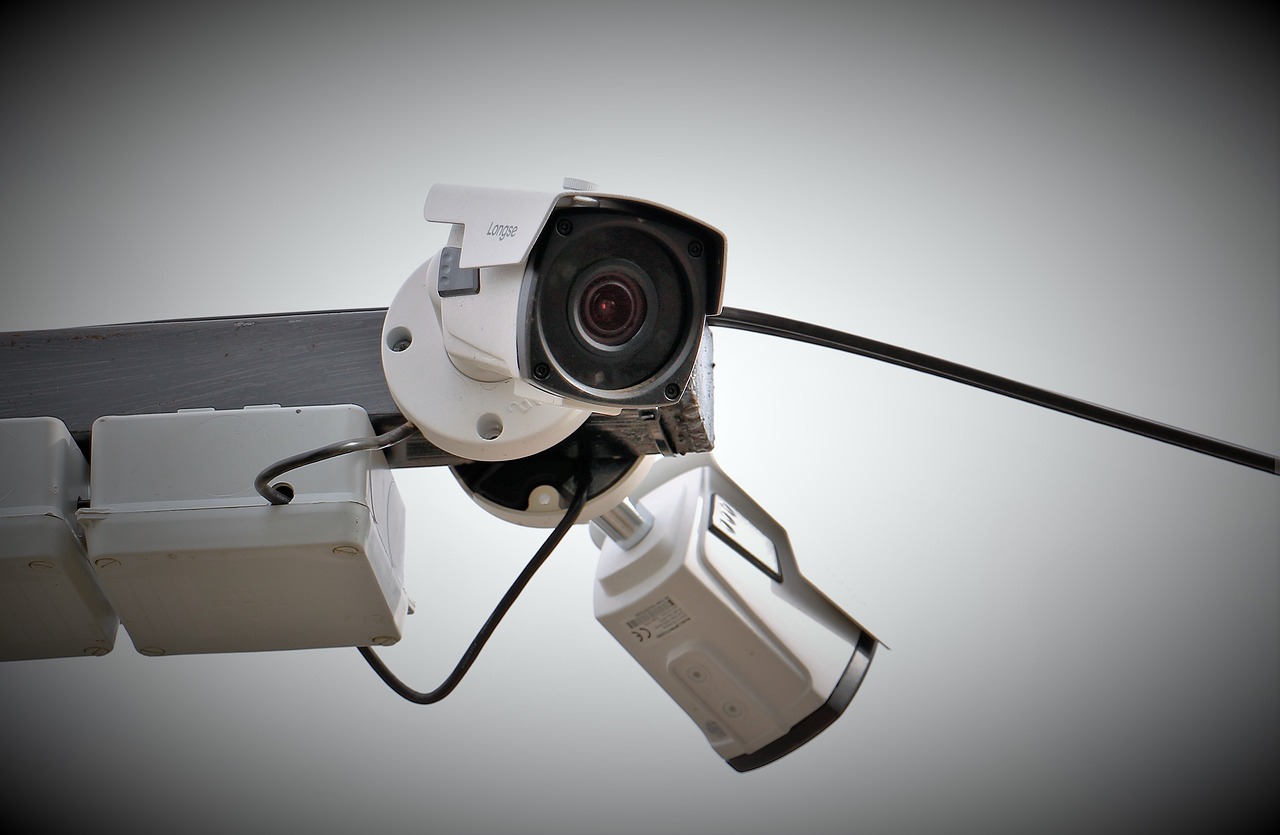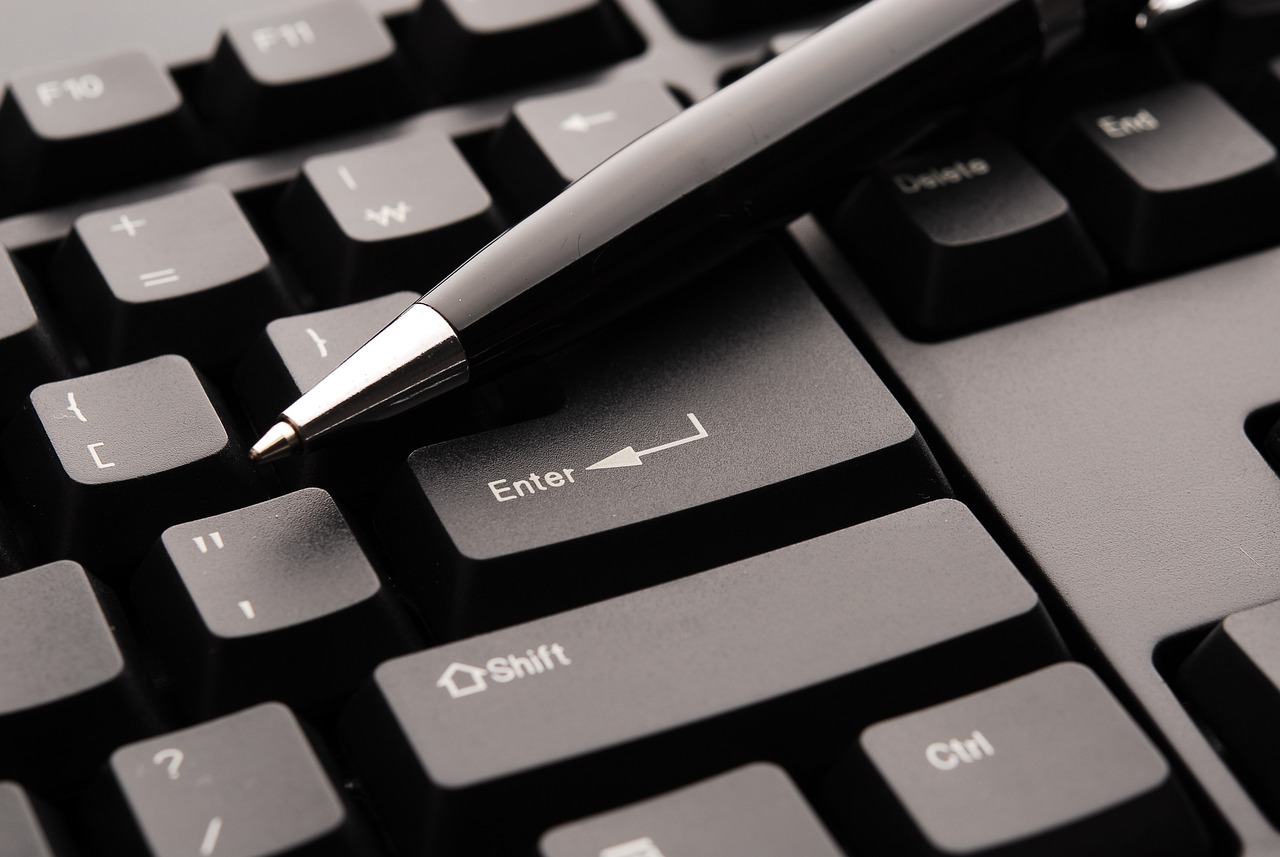Strategies for Protecting Your Online Identity
In today's digital age, protecting your online identity is not just an option; it's a necessity. With the rise of social media, online banking, and e-commerce, our personal information is more vulnerable than ever. But what does it really mean to safeguard your online identity? It involves a series of proactive measures that can help you maintain your privacy and security while navigating the digital landscape. Think of it like locking your front door before you leave the house; it’s a simple step that can prevent a world of trouble. In this article, we will explore essential strategies that you can implement to enhance your digital security and privacy.
Your online identity is the collection of information that represents you on the internet. This includes your social media profiles, email addresses, usernames, and even your online shopping habits. Recognizing the components of your online identity is crucial for implementing effective protection strategies. For instance, did you know that every post you make on social media contributes to your digital footprint? It’s like leaving breadcrumbs that can be followed by anyone with malicious intent. By understanding what constitutes your online identity, you can take informed steps to protect it.
Creating strong, unique passwords is a fundamental step in protecting your online accounts. A weak password is like leaving the key under the doormat—it’s just too easy for someone to find. In this section, we will discuss password best practices and the vital role of password managers in your security arsenal. Remember, a strong password is not just a combination of letters and numbers; it should be a fortress that guards your digital life.
So, what makes a password strong? A strong password should be complex and lengthy, ideally consisting of at least 12 characters. It should combine uppercase and lowercase letters, numbers, and special symbols. For example, instead of using “password123,” consider something like “G@rden!2023#Lemon.” The more unpredictable your password, the harder it becomes for cybercriminals to crack it. Here are some characteristics of strong passwords:
- Length: At least 12-16 characters
- Complexity: Mix of letters, numbers, and symbols
- Unpredictability: Avoid common words or phrases
Many users fall into the trap of using easily guessable passwords. Common mistakes include using personal information such as birthdays, pet names, or simple sequences like "123456." These passwords are like leaving your front door wide open! Here are a few frequent mistakes to avoid:
- Using the same password across multiple accounts
- Choosing simple, easily guessable passwords
- Neglecting to update passwords regularly
Password managers can simplify the process of creating and storing strong passwords. They generate complex passwords for you and store them securely, so you don’t have to remember each one. It’s like having a personal vault for your digital keys! When choosing a password manager, look for features such as encryption, ease of use, and cross-platform compatibility. Popular options include LastPass, 1Password, and Bitwarden.
Two-factor authentication adds an extra layer of security to your accounts. It requires not only your password but also a second form of verification, such as a text message or authentication app code. This means that even if someone gets hold of your password, they still can't access your account without that second factor. Think of it as having a double lock on your door; it makes it significantly harder for intruders to get in.
Adjusting privacy settings on social media platforms is vital for controlling who sees your information. Social media can be a double-edged sword; while it connects us, it can also expose us to risks. Regularly reviewing and updating your privacy settings can help you maintain a secure social media presence. For example, consider who can see your posts and who can send you friend requests. This simple act can drastically reduce your exposure to unwanted attention.
Regularly reviewing your friend list can help you maintain a secure social media presence. It's essential to identify and remove unwanted connections. Think of your friend list as your digital backyard; you wouldn’t want strangers hanging around, right? Take the time to audit your connections and ensure that everyone on your list is someone you trust.
Being cautious about the personal information you share online is crucial. Avoid posting sensitive details such as your home address, phone number, or financial information. Remember, the internet is like a public park; once you put something out there, it’s hard to take it back. Instead, consider sharing only what is necessary and think twice before posting anything that could compromise your privacy.
Phishing scams are prevalent tactics used to steal personal information. These scams often come disguised as legitimate emails or messages, tricking you into providing sensitive data. Educating yourself on how to identify and avoid these deceptive schemes is essential for protecting your online identity. Always be skeptical of unsolicited messages that ask for personal or financial information.
Understanding the various techniques used by phishers can help you stay vigilant. Common methods include:
- Email spoofing: Fake emails that look like they’re from trusted sources
- Urgency tactics: Messages that create a sense of urgency to act quickly
- Links to fake websites: URLs that mimic legitimate sites
Knowing how to report phishing attempts can protect others from falling victim. If you encounter a phishing scam, report it to your email provider or the platform where it occurred. This helps to strengthen the community's defenses against such attacks.
Regularly monitoring your online accounts can help detect unauthorized activity early. Set aside time each month to review your account statements and online activity. This vigilance is crucial; it’s much easier to address a problem when it’s small rather than letting it grow unchecked.
Account alerts can notify you of suspicious activity. Most online services offer the option to set up alerts for transactions, logins, and changes to your account settings. Think of these alerts as your digital watchdogs, barking when something seems off.
Regularly reviewing account statements helps identify any unauthorized transactions. This practice is especially important for financial accounts. Look out for any charges you don’t recognize; they could be a sign of fraud. Keeping a close eye on your financial accounts is like having a safety net; it ensures you catch issues before they escalate.
Q: How often should I change my passwords?
A: It's advisable to change your passwords every 3-6 months, or immediately if you suspect a breach.
Q: What should I do if I suspect my account has been hacked?
A: Immediately change your password, enable two-factor authentication, and report the incident to the service provider.
Q: Are password managers safe to use?
A: Yes, reputable password managers use strong encryption to keep your passwords secure. Just ensure you choose a trusted provider.
Q: How can I tell if a message is a phishing attempt?
A: Look for signs like poor grammar, generic greetings, and urgency. Always verify the sender's email address.

Understanding Online Identity
Your online identity is much more than just a username or an email address; it's a digital reflection of who you are. Think of it as your virtual persona, shaped by the information you share, the interactions you have, and the digital footprints you leave behind. In today’s hyper-connected world, understanding what constitutes your online identity is crucial for anyone looking to safeguard their personal information. It’s like building a house; if you don’t know the foundation, how can you ensure it’s strong enough to withstand the storms?
At its core, your online identity includes various elements such as:
- Social Media Profiles: These platforms often contain personal details, interests, and connections that define you.
- Email Accounts: Your email is often the gateway to other accounts, making it a pivotal part of your identity.
- Online Purchases: The information you share during transactions can reveal a lot about your habits and preferences.
- Search Engine Results: What shows up when someone Googles your name can significantly impact your online reputation.
Understanding these components is essential because they can be exploited if not properly managed. For instance, a compromised email account can lead to unauthorized access to numerous other accounts, while an unguarded social media profile can expose you to identity theft or harassment. Each piece of your online identity is interconnected, creating a web that can either protect you or leave you vulnerable.
Moreover, the way you present yourself online can affect your personal and professional life. Employers often conduct background checks on potential hires, and what they find can influence their decision-making. Therefore, maintaining a positive and secure online identity is not just about privacy—it's about reputation. Just as you wouldn’t leave your front door wide open, you shouldn’t leave your online identity unguarded.
In summary, understanding your online identity is the first step in protecting it. By recognizing the various components and their implications, you can take proactive measures to fortify your digital presence. Remember, your online identity is a powerful asset; treat it with the respect and caution it deserves.

Importance of Strong Passwords
In today's digital age, where our lives are intertwined with technology, the importance of strong passwords cannot be overstated. Think of your password as the key to your digital house; if it's weak or easily guessable, you're essentially leaving your front door wide open for intruders. A robust password acts as a formidable barrier against cyber threats, protecting your personal information, financial data, and online identity. With cybercrime on the rise, understanding the significance of strong passwords is more critical than ever.
Creating strong, unique passwords is the first line of defense in safeguarding your online accounts. A strong password is not just a random combination of characters; it should be lengthy, complex, and unique to each account. This complexity makes it much harder for hackers to crack your passwords through brute force attacks. For example, rather than using "123456" or "password," which are among the most commonly used passwords, consider using a combination of uppercase and lowercase letters, numbers, and special characters. Something like "G!7x#Bq9@wR3" is much more secure and difficult to guess.
Many people underestimate the importance of having different passwords for different accounts. If one account is compromised, having unique passwords for each of your accounts means that the hacker won’t have easy access to your other accounts. This is where password managers come into play. They can generate and store strong passwords for you, making it easier to maintain unique passwords without the need to remember all of them.
Moreover, strong passwords are not just about complexity; they also require regular updates. Just like how you would change the locks on your doors after losing a key, it's essential to change your passwords periodically. This practice minimizes the risk of unauthorized access, especially if you suspect that your information may have been compromised.
In summary, strong passwords are a fundamental component of your online security strategy. They protect your sensitive information and serve as a deterrent against cybercriminals. Adopting best practices in password creation and management is imperative for anyone looking to safeguard their online identity.
- Why are strong passwords important? Strong passwords protect your accounts from unauthorized access and cyber threats.
- How often should I change my passwords? It's advisable to change your passwords every 3 to 6 months or immediately if you suspect a breach.
- What is a password manager? A password manager is a tool that helps you create, store, and manage your passwords securely.
- Can I use the same password for multiple accounts? No, using the same password increases the risk of multiple accounts being compromised if one is hacked.

Characteristics of Strong Passwords
When it comes to protecting your online identity, crafting a strong password is your first line of defense. But what exactly makes a password strong? It's not just about avoiding "123456" or "password"; it’s about creating something that’s both complex and memorable. A strong password should ideally be a mix of uppercase and lowercase letters, numbers, and special symbols. Think of it like a secret recipe: the more varied the ingredients, the harder it is for someone to replicate it.
Here are some key characteristics to consider when creating a strong password:
- Length: Aim for at least 12 to 16 characters. The longer, the better!
- Complexity: Combine different types of characters. For instance, use letters (both uppercase and lowercase), numbers, and symbols like @, #, or $.
- Avoid Common Words: Don't use easily guessable information like your name, birthday, or common phrases.
- Unpredictability: Create a password that doesn’t follow a pattern. For example, instead of "abcd1234", try a random combination like "7q@Zp3!kLx".
Another effective strategy is to use a passphrase—a series of random words strung together. For example, "BlueSky!Dolphin&42Coffee" not only meets the complexity requirement but is also easier to remember than a random string of characters. The key is to ensure that your password is unique for each account. If one account gets compromised, you don’t want the others to fall like dominoes.
Additionally, consider the use of password managers. These tools can generate and store complex passwords for you, taking the hassle out of remembering them. Some popular options include LastPass, Dashlane, and 1Password. They can help you create unique passwords for every site and will even alert you if any of your passwords have been compromised in a data breach.
In summary, a strong password is your digital shield. By focusing on length, complexity, and uniqueness, you can significantly reduce your risk of falling victim to cyber threats. Remember, while it might seem tedious to create and manage strong passwords, the peace of mind it brings is worth every effort.
- What is the ideal length for a strong password? A strong password should ideally be at least 12 to 16 characters long.
- Can I use the same password for multiple accounts? No, it's highly recommended to use unique passwords for each account to minimize risk.
- What should I do if I forget my password? Use the password recovery options provided by the service, and consider using a password manager to avoid forgetting them in the future.

Common Password Mistakes
When it comes to safeguarding your online identity, one of the most critical elements is your password. However, many users unknowingly fall into the trap of making common password mistakes that can jeopardize their security. One of the biggest blunders is the use of easily guessable passwords. Think about it: using "123456" or "password" is like leaving your front door wide open and inviting trouble. It's crucial to understand that the more predictable your password is, the easier it is for cybercriminals to crack it.
Another frequent mistake is reusing passwords across multiple accounts. Imagine having one key that opens every door in your house. If someone gets hold of that key, they can access everything! Similarly, if a hacker compromises one of your accounts, they can easily try that same password on your other accounts, leading to a domino effect of breaches. Therefore, it's essential to create unique passwords for each of your online profiles.
Furthermore, many users underestimate the importance of length and complexity. A password that is short and simple is like a flimsy lock on a vault; it won't take long for someone to break in. Strong passwords should ideally be at least 12-16 characters long and include a mix of uppercase letters, lowercase letters, numbers, and symbols. For example, instead of using "Summer2023," consider a more complex alternative like "S!mm3r@2023L0ck!"
Additionally, storing passwords in easily accessible places, such as a notepad on your desk or in an email, is another significant error. This practice is akin to writing your house keys on a sticky note and leaving it on the front door. Instead, consider using a password manager, which can securely store and encrypt your passwords, making it much harder for anyone to access them.
Lastly, failing to change passwords regularly is a mistake that many overlook. Just like you wouldn’t wear the same pair of shoes every day for a year, you shouldn’t rely on the same password for too long. Regularly updating your passwords can significantly reduce the risk of unauthorized access.
In summary, avoiding these common password mistakes can go a long way in protecting your online identity. Always remember to:
- Avoid easily guessable passwords.
- Use unique passwords for each account.
- Ensure your passwords are long and complex.
- Store passwords securely.
- Change passwords regularly.

Using Password Managers
In today's digital age, where our lives are intertwined with technology, password managers have emerged as indispensable tools for maintaining our online security. Imagine trying to remember a unique password for every single account you own—it's like juggling flaming torches while riding a unicycle! It’s not just impractical; it’s downright dangerous. That’s where password managers come into play. These handy applications not only generate strong, random passwords for you but also store them securely, so you don’t have to worry about forgetting them.
One of the most significant advantages of using a password manager is that it encourages the use of complex passwords. Instead of falling into the trap of using easily guessable passwords like "123456" or "password," you can create unique passwords that are much harder for hackers to crack. Most password managers can generate passwords that are a combination of letters, numbers, and symbols, making it nearly impossible for anyone to guess them.
When choosing a password manager, it’s essential to consider a few key factors:
- Security Features: Look for features like end-to-end encryption and two-factor authentication to ensure your data is safe.
- User Interface: A user-friendly interface can make it easier to manage your passwords.
- Cross-Platform Availability: Choose a password manager that works on multiple devices, so you can access your passwords wherever you are.
Some of the popular password managers include LastPass, Dashlane, and 1Password. Each of these tools offers unique features and pricing plans, so it’s worth doing a little research to find the one that best fits your needs.
However, it’s important to remember that while password managers are incredibly useful, they are not a complete solution by themselves. You still need to practice good security hygiene. For instance, ensure that you use a strong master password to protect your password manager and enable two-factor authentication whenever possible. This way, even if someone tries to access your password manager, they’ll face an additional barrier.
In summary, using a password manager is like having a personal vault for your online credentials. It simplifies the process of managing your passwords and enhances your overall security. With the right password manager, you can feel confident that your online identity is well-protected, allowing you to focus on what really matters in your digital life.
- What is a password manager? A password manager is a tool that helps you create, store, and manage your passwords securely.
- Are password managers safe? Yes, most password managers use strong encryption and security features to protect your data.
- Can I use a password manager on multiple devices? Yes, many password managers offer cross-platform support, allowing you to access your passwords on different devices.
- What if I forget my master password? Most password managers have recovery options, but it’s essential to choose a master password you can remember.

Two-Factor Authentication (2FA)
is like adding an extra lock to your front door; it’s an additional layer of security that keeps your online accounts safer from unauthorized access. In today’s digital world, where cyber threats are lurking around every corner, relying solely on a password is like leaving your house key under the doormat—it's just not secure enough! 2FA requires not just your password but also a second piece of information, often a temporary code sent to your phone or generated by an app, making it significantly harder for intruders to gain access.
So, how does it work? When you log into an account that has 2FA enabled, you’ll first enter your username and password. Then, instead of gaining immediate access, you’ll be prompted to provide a second form of verification. This could be a code sent via SMS, an email, or generated by an authenticator app. It’s like having a secret handshake that only you and your trusted device know!
Here are some popular methods of 2FA you might encounter:
- SMS Codes: A text message sent to your mobile phone with a code to enter after your password.
- Authenticator Apps: Apps like Google Authenticator or Authy generate time-based codes that change every 30 seconds.
- Email Verification: A code sent to your registered email address that you must enter to complete the login process.
- Biometric Verification: Utilizing fingerprint or facial recognition technology for added security.
Implementing 2FA is incredibly important for protecting sensitive information. Even if a hacker manages to steal your password, they would still need that second form of verification to access your account. This means that you can sleep a little easier at night knowing that your online identity is much more secure.
However, while 2FA significantly boosts your security, it’s not foolproof. It’s essential to remain vigilant and recognize that phishing attacks can still compromise your 2FA methods. For example, if you receive a suspicious request for your 2FA code, always double-check the source before responding. Ultimately, 2FA is a powerful tool in your digital security arsenal, but it should be used in conjunction with other best practices, such as strong passwords and regular account monitoring.
Q: Is Two-Factor Authentication really necessary?
A: Yes! With the rise of cyber threats, 2FA adds an essential layer of security that can protect your accounts even if your password is compromised.
Q: What if I lose my phone with the 2FA app?
A: Most services offer backup codes when you set up 2FA. Store these codes in a safe place so you can still access your account if you lose your phone.
Q: Can I use 2FA on all my online accounts?
A: Many major platforms, including email services, social media, and banking sites, support 2FA. Always check your account settings to enable it wherever possible.

Social Media Privacy Settings
In today's digital age, social media has become an integral part of our lives. However, with great connectivity comes great responsibility! Protecting your online identity on these platforms is not just a choice; it's a necessity. Social media privacy settings are your first line of defense against unwanted attention and potential threats. By taking the time to adjust these settings, you can control who sees your information and how your data is used.
First things first, let’s dive into the privacy settings available on popular social media platforms. Each platform has its unique set of controls, but they all share a common goal: to help you manage your online presence. Here are some key areas you should focus on:
- Profile Visibility: Adjust who can see your profile. You can often choose between options like 'Public,' 'Friends Only,' or 'Custom.' This is crucial for limiting exposure to strangers.
- Post Sharing: Control who can share your posts. Some platforms allow you to restrict sharing to friends only, preventing your content from spreading beyond your immediate circle.
- Tagging Options: Review who can tag you in photos and posts. This can help prevent unwanted images from appearing on your profile.
Moreover, it’s essential to regularly review your friend list. You might be surprised at how many people can see your information just because they are connected with you. Periodically going through your friends and removing those you no longer interact with can significantly enhance your privacy. Think of it like cleaning out your closet: out with the old, and make room for what truly matters!
Another important aspect of social media privacy is limiting the amount of personal information you share. While it might be tempting to post every detail of your life, remember that not everything needs to be public. Avoid sharing sensitive information such as your phone number, address, or financial details. This not only protects your privacy but also reduces the risk of identity theft. In essence, think twice before you post; a moment of reflection can save you from potential future regrets!
Lastly, don’t forget to enable two-factor authentication (2FA) where available. This adds an extra layer of security, ensuring that even if someone gets hold of your password, they won't easily access your account. It's like having a deadbolt on your door in addition to a lock; it makes it much harder for intruders to get in.
In conclusion, taking control of your social media privacy settings is a powerful step towards safeguarding your online identity. By being proactive and vigilant, you can enjoy the benefits of social media without compromising your security. So, take a moment today to review your privacy settings and make those adjustments!
Q: How can I find my privacy settings on social media?
A: Typically, you can find privacy settings in the account settings or security section of the platform. Look for options labeled ‘Privacy’ or ‘Security’ to access these settings.
Q: What should I do if I have shared too much personal information?
A: If you realize you've shared sensitive information, it's best to delete those posts and adjust your privacy settings to limit future exposure. Consider reviewing your friend list and removing anyone you don't trust.
Q: Is it safe to accept friend requests from people I don’t know?
A: It’s generally advisable to only accept friend requests from people you know personally. Unknown connections can lead to privacy breaches or unwanted exposure.
Q: Can I block someone from seeing my profile?
A: Yes! Most social media platforms allow you to block users, preventing them from viewing your profile or interacting with you.

Reviewing Your Friend List
In the vast world of social media, your friend list can resemble a bustling marketplace, filled with familiar faces, acquaintances, and perhaps a few strangers. Regularly reviewing this list is not just a good practice; it's essential for maintaining your online security and privacy. Think about it: would you leave your front door wide open, inviting anyone to stroll in? The same principle applies to your digital life. By taking the time to evaluate who has access to your personal information, you can significantly reduce the risk of unwanted attention or malicious intent.
When you scroll through your friend list, consider the following questions: Who are these people? Do I really know them? Have I interacted with them recently? It's easy to accept friend requests out of curiosity or a desire to connect, but not every connection is beneficial. Some may have ulterior motives, while others may simply clutter your feed with irrelevant content. By filtering your connections, you can create a more curated social experience that enhances your online interactions.
Here are a few tips to help you effectively review your friend list:
- Identify Unfamiliar Faces: If you come across names that don't ring a bell, take a moment to investigate. A quick search can reveal if they are legitimate connections or potential threats.
- Assess Engagement: Consider how often you engage with your friends. If someone hasn’t interacted with you in ages, it might be time to reconsider their place on your list.
- Remove Toxic Connections: Sometimes, you might find individuals who bring negativity into your online space. Don’t hesitate to remove them; your mental well-being is paramount.
Moreover, social media platforms often have features that allow you to categorize friends or limit visibility of your posts. Utilize these tools to enhance your privacy settings. For example, you can create lists to group friends based on how close you are or how you know them. This way, you can share updates selectively, ensuring that only the right people see your personal information.
In conclusion, regularly reviewing your friend list is akin to spring cleaning for your digital life. It not only helps protect your online identity but also enhances the quality of your social media experience. So, take a few moments today to comb through those connections. You might be surprised by what you find—and what you choose to remove.
Q: How often should I review my friend list?
A: It's a good idea to review your friend list at least once every few months or whenever you feel your online environment has become cluttered or uncomfortable.
Q: What should I do if I find a suspicious profile on my friend list?
A: If you identify a suspicious profile, it's best to remove them immediately and, if necessary, report their profile to the platform for further investigation.
Q: Can I restrict what certain friends see on my profile?
A: Absolutely! Most social media platforms offer privacy settings that allow you to customize who can see your posts and personal information.

Limiting Personal Information Sharing
In today's digital age, where social media and online interactions dominate, it’s crucial to be mindful of the personal information we share. Imagine your online presence as a garden; if you let too many weeds grow, it can quickly become overrun and unmanageable. Similarly, oversharing can lead to vulnerabilities that expose you to identity theft or unwanted attention. So, how do we cultivate a healthy online identity while keeping the weeds at bay?
First and foremost, it’s essential to understand what constitutes personal information. This can range from basic details like your name and email address to more sensitive data such as your home address, phone number, or even your financial information. The more you share, the easier it becomes for cybercriminals to piece together your identity. Therefore, it’s wise to adopt a cautious approach when it comes to sharing information online.
One effective strategy is to limit the amount of personal information you share on social media platforms. Most platforms allow you to customize privacy settings, which can help you control who sees your posts and personal details. For instance, consider the following:
- Profile Settings: Make sure your profile is set to private, ensuring that only approved friends can view your content.
- Sharing Options: Before posting, ask yourself if the information is necessary. Is it really essential for your friends to know your location every time you go out?
- Friend Requests: Be selective about who you accept as friends. A large friend list can lead to unintended sharing with people you don’t fully trust.
Moreover, think twice before participating in quizzes or polls that ask for personal details. While they may seem harmless and fun, they can often be a way for malicious actors to gather data. Remember, if a quiz asks for your mother’s maiden name or your first pet’s name, it’s best to skip it. Instead, you can engage in safer activities that don’t compromise your privacy.
Another critical aspect of limiting personal information sharing is being cautious about location tagging. While it might be tempting to share your latest vacation spot or your favorite café, consider the risks. Sharing your location in real-time can alert potential intruders that your home is empty. To mitigate this risk, you can wait until you return home to post about your adventures, allowing you to maintain your privacy while still sharing your experiences.
Finally, it’s vital to regularly review your online accounts and the information associated with them. This includes checking your privacy settings and ensuring that you’re not inadvertently sharing more than you intended. Think of it as a spring cleaning for your digital life: you want to keep the essentials and discard anything that doesn’t serve you anymore.
In conclusion, limiting personal information sharing is not just about being cautious; it’s about taking proactive steps to protect your online identity. By being selective about what you share, adjusting your privacy settings, and regularly reviewing your accounts, you can cultivate a secure and healthy digital presence. Remember, in the vast garden of the internet, it’s better to keep your personal information as a well-guarded treasure rather than letting it be scattered to the winds.
Q: Why is limiting personal information sharing important?
A: It helps protect you from identity theft, cyberbullying, and unwanted attention.
Q: How can I check my privacy settings on social media?
A: Most platforms have a dedicated privacy section in their settings where you can adjust who can see your posts and personal information.
Q: What should I do if I accidentally shared too much information?
A: Review your posts, adjust your privacy settings, and consider deleting any sensitive information that could be misused.

Recognizing Phishing Scams
In today's digital landscape, phishing scams have become a prevalent threat, targeting unsuspecting individuals to steal personal information. These scams often masquerade as legitimate communications, making it crucial for you to stay alert and recognize the signs of deception. Phishing can occur through various channels, including emails, text messages, and even social media. The ultimate goal of these scams is to trick you into providing sensitive information like passwords, credit card numbers, or Social Security numbers.
One of the most common tactics used by phishers is to create a sense of urgency. For example, you might receive an email that claims your bank account will be suspended unless you verify your information immediately. This tactic plays on your fear and can lead you to act quickly without thinking. Be wary of any communication that pressures you to act fast! Legitimate organizations typically provide ample time for you to respond and will not threaten you with dire consequences.
Another red flag to watch for is poor grammar and spelling. Many phishing emails are poorly written and contain noticeable mistakes. If you receive a message that looks suspicious, take a moment to examine the language used. Legitimate companies usually have a professional standard for their communications. If the email seems off, it’s best to delete it or report it.
Phishing attempts often include links that lead to fake websites designed to look like the real thing. Before clicking on any link, hover over it to see the actual URL. If the link appears suspicious or does not match the official website of the organization, do not click it! Instead, you can manually type the website address into your browser or use a search engine to find the official site.
To help you recognize phishing scams more effectively, here are some common phishing techniques to be aware of:
- Email Spoofing: Phishers often spoof email addresses to make it look like the message is coming from a legitimate source.
- Fake Websites: They create counterfeit websites that mimic legitimate ones to steal your information.
- Urgent Requests: Phishing messages often create a false sense of urgency, pushing you to act quickly.
- Attachments: Be cautious of unexpected attachments, as they may contain malware.
Knowing how to identify these tactics can significantly reduce your risk of falling victim to phishing scams. If you ever suspect that you've received a phishing attempt, it's essential to report it. Most companies have dedicated channels for reporting fraudulent communications. This not only helps protect you but also assists others from becoming victims.
Q: What should I do if I think I've fallen for a phishing scam?
A: If you believe you've provided sensitive information, immediately change your passwords and contact your bank or service provider. They can help secure your accounts.
Q: How can I report a phishing scam?
A: You can report phishing emails to the Federal Trade Commission (FTC) at reportfraud.ftc.gov. Additionally, many companies have their own reporting mechanisms.
Q: Are there tools to help detect phishing attempts?
A: Yes! Various browser extensions and security software can help identify and block phishing attempts. Always keep your software updated for the best protection.

Common Phishing Techniques
Phishing scams have become increasingly sophisticated, making it essential for internet users to be aware of the common techniques employed by cybercriminals. These deceptive tactics are designed to trick you into revealing sensitive information, such as passwords, credit card numbers, and social security details. One of the most prevalent methods is the use of email phishing, where attackers send seemingly legitimate emails that appear to be from trusted sources like banks or popular online services. These emails often contain urgent messages or alarming notifications that prompt you to click on a link or download an attachment.
Another common technique is SMS phishing, also known as smishing. This method involves sending fraudulent text messages that mimic messages from banks or service providers. The message may include a link to a fake website designed to steal your personal information. For instance, you might receive a text claiming that your account has been compromised, urging you to click a link to verify your identity. Always remember, if something feels off, it probably is!
Moreover, social engineering plays a significant role in phishing attacks. Cybercriminals often manipulate victims into divulging personal information by creating a sense of urgency or fear. Imagine receiving a call from someone claiming to be from your bank, insisting that you need to verify your account immediately. This tactic exploits your trust and can lead to devastating consequences if you comply.
Phishing can also occur through malicious websites. Attackers create fake websites that closely resemble legitimate ones. These sites are often linked from phishing emails or ads. When you enter your credentials, they are captured by the attackers. To avoid falling victim to this technique, always double-check the URL of the website you are visiting. A quick glance at the web address can save you from a world of trouble.
Here are some red flags to watch for when identifying phishing attempts:
- Unusual sender email addresses or phone numbers
- Urgent language that creates a sense of panic
- Generic greetings like "Dear Customer" instead of your name
- Links that do not match the company’s official website
In conclusion, being aware of these common phishing techniques can significantly reduce your risk of falling victim to online scams. Always approach unexpected communications with caution, and when in doubt, verify the source through official channels. Remember, your online safety is in your hands!
Q: What should I do if I think I've fallen for a phishing scam?
A: If you suspect you've been a victim, change your passwords immediately, monitor your accounts for unauthorized transactions, and report the incident to the relevant authorities.
Q: Can phishing attacks happen on social media?
A: Absolutely! Phishing can occur on social media platforms through fake messages, posts, or ads that lead you to malicious sites. Always be cautious about clicking on links from unknown sources.
Q: How can I protect myself from phishing scams?
A: Use strong passwords, enable two-factor authentication, and be skeptical of unsolicited communications. Additionally, consider using security software that can help identify phishing attempts.

Reporting Phishing Attempts
When you encounter a phishing attempt, it’s crucial to act swiftly and responsibly. Reporting these deceptive schemes not only protects your own online identity but also helps safeguard others from falling victim to similar traps. Think of it as being a digital superhero; your actions can thwart cyber villains who prey on unsuspecting users.
First, identify the type of phishing attempt you’ve encountered. It could be an email, a text message, or even a phone call. Each format may require a different reporting approach. For instance, if you receive a suspicious email, do not click on any links or download attachments. Instead, take a screenshot of the email for your records, as it can serve as evidence when you report the incident.
Next, you should report the phishing attempt to the appropriate authorities. Here are some common platforms and organizations where you can report phishing:
- Email Providers: Most email services, like Gmail and Yahoo, have built-in options to report phishing. Simply locate the "Report Phishing" option in the dropdown menu of the email.
- Anti-Phishing Organizations: Websites like the Anti-Phishing Working Group (APWG) allow you to report phishing attempts directly on their platform.
- Federal Trade Commission (FTC): If you believe you’ve been targeted in a phishing scam within the United States, you can report it to the FTC via their website.
- Local Authorities: In some cases, it may be necessary to inform your local law enforcement agency, especially if financial loss is involved.
After reporting, it's essential to take preventative steps to secure your accounts. Change your passwords and enable two-factor authentication wherever possible. This will add an extra layer of protection against any unauthorized access. Remember, staying informed is your best defense. Regularly educate yourself about the latest phishing techniques, as scammers are always evolving their tactics.
In conclusion, reporting phishing attempts is a vital part of maintaining your online security. By taking the initiative to report these scams, you not only protect yourself but also contribute to a safer online environment for everyone. So, the next time you spot a phishing attempt, don’t hesitate to take action!
1. What should I do if I clicked on a phishing link?
If you accidentally clicked on a phishing link, immediately disconnect from the internet and run a security scan on your device. Change your passwords and enable two-factor authentication on your accounts.
2. How can I recognize a phishing email?
Phishing emails often contain generic greetings, spelling errors, and urgent language that encourages immediate action. Always verify the sender's email address and look for inconsistencies.
3. Can I report phishing attempts anonymously?
Yes, many platforms allow you to report phishing attempts without revealing your identity. However, providing details can help authorities take action against the scammers.
4. Is it safe to use email filters to block phishing emails?
Yes, using email filters can help reduce the number of phishing emails you receive. However, it's essential to remain vigilant as some phishing attempts may still bypass these filters.

Regularly Monitoring Your Accounts
In our fast-paced digital world, regularly monitoring your online accounts is not just a good practice; it's a necessity. Imagine your online accounts as your digital bank vaults. If you never check on them, how would you know if someone is trying to break in? Just like you wouldn’t leave your physical bank account unattended, the same vigilance applies to your online presence. By keeping an eye on your accounts, you can quickly detect any unauthorized activity and take swift action to mitigate potential damage.
One of the key reasons to monitor your accounts is to catch unauthorized transactions as soon as they happen. Cybercriminals are becoming increasingly sophisticated, and they often exploit vulnerabilities before you even realize it. For instance, if someone gains access to your credit card information, they could make purchases without your knowledge. By regularly checking your statements, you can spot these discrepancies early and report them to your bank or service provider.
To facilitate this process, consider using tools and features provided by your financial institutions and online services. Most banks and platforms offer account alerts that notify you of suspicious activities. Setting these alerts up is like having a digital security guard watching over your accounts 24/7. Here’s how you can set them up:
- Log into your online banking or service account.
- Navigate to the security or notifications settings.
- Select the types of alerts you want to receive, such as logins from unrecognized devices or transactions over a certain amount.
- Save your settings and ensure your contact information is up to date.
In addition to setting up alerts, it’s essential to review your account statements regularly. This means not just glancing at the balance but diving deeper into the details. Look for any transactions that you don’t recognize or that appear out of the ordinary. Here’s a simple checklist to guide you during your review:
| Action | Frequency |
|---|---|
| Check account statements | Monthly |
| Review transaction history | Weekly |
| Update passwords | Every 3-6 months |
| Enable two-factor authentication | As needed |
By following these steps, you can stay ahead of potential threats. Remember, being proactive is far better than being reactive. If you notice anything suspicious, don’t hesitate to take action. Contact your bank or service provider immediately, and consider changing your passwords as an added precaution.
In conclusion, regularly monitoring your accounts is an essential part of maintaining your online security. Just like you wouldn’t ignore a strange noise in your house, don’t ignore unusual activity in your accounts. Stay vigilant, stay informed, and keep your digital life secure.
Q: How often should I check my online accounts?
A: It's recommended to check your accounts at least once a week and review your statements monthly to catch any unauthorized transactions early.
Q: What should I do if I spot unauthorized transactions?
A: Immediately report the transactions to your bank or service provider, change your passwords, and consider enabling additional security measures like two-factor authentication.
Q: Are account alerts effective?
A: Yes, account alerts are highly effective as they provide real-time notifications of suspicious activities, allowing you to act quickly to protect your accounts.

Setting Up Account Alerts
This article explores essential strategies for safeguarding your online identity, highlighting best practices, tools, and techniques to enhance your digital security and privacy.
Online identity encompasses the information and persona you create on the internet. Recognizing its components is crucial for implementing effective protection strategies.
Creating strong, unique passwords is a fundamental step in protecting your online accounts. This section discusses password best practices and the role of password managers.
Strong passwords should be complex and lengthy, combining letters, numbers, and symbols. This subsection details the specific traits that make passwords effective against attacks.
Many users fall into the trap of using easily guessable passwords. Here, we outline frequent mistakes and how to avoid them for better security.
Password managers can simplify the process of creating and storing strong passwords. This section examines their benefits and how to choose the right one.
Two-factor authentication adds an extra layer of security to your accounts. This subsection explains how 2FA works and why it's essential for protecting sensitive information.
Adjusting privacy settings on social media platforms is vital for controlling who sees your information. This section guides you through the necessary steps to enhance your privacy.
Regularly reviewing your friend list can help you maintain a secure social media presence. This subsection discusses how to identify and remove unwanted connections.
Being cautious about the personal information you share online is crucial. This section offers tips on what to avoid posting on social media platforms.
Phishing scams are prevalent tactics used to steal personal information. This section educates readers on how to identify and avoid these deceptive schemes.
Understanding the various techniques used by phishers can help you stay vigilant. This subsection highlights the most common methods and red flags to watch for.
Knowing how to report phishing attempts can protect others from falling victim. This section outlines the steps to take when you encounter a phishing scam.
Regularly monitoring your online accounts can help detect unauthorized activity early. This section discusses the importance of vigilance and tools to assist in monitoring.
Setting up account alerts is like having a digital watchdog for your financial and personal accounts. Imagine receiving an immediate notification every time there's a transaction or a sign-in attempt on your account. This proactive approach can be a lifesaver, allowing you to act swiftly if something seems off. Most banks and online services offer the ability to set up alerts for various activities, including:
- Unusual login attempts
- Large transactions
- Changes to account settings
To get started, log into your account and navigate to the security or notifications section. Here, you can customize what types of alerts you want to receive. Some platforms even allow you to choose how you want to be notified—whether via email, SMS, or app notifications. It’s essential to ensure that your contact information is up to date so that you don’t miss any critical alerts.
Moreover, consider setting alerts for your credit report as well. Many services can notify you of any significant changes to your credit score or new accounts opened in your name. This can be a crucial step in catching identity theft early. By staying informed, you empower yourself to take control of your online identity and protect it from potential threats.
- What should I do if I receive an alert about suspicious activity? Immediately check your account for any unauthorized transactions and consider changing your password and enabling two-factor authentication.
- Are account alerts free? Most services offer account alerts for free, but it’s always good to check with your specific provider.
- Can I set up alerts for all my accounts? Yes, most banks and online services provide options to set alerts, but the features may vary by provider.

Reviewing Account Statements
When it comes to protecting your online identity, one of the most crucial yet often overlooked practices is reviewing your account statements. Think of your account statements as a window into your financial health; they reveal not only your spending habits but also any unauthorized transactions that could indicate fraud. Regularly scrutinizing these statements can be your first line of defense against identity theft and financial loss.
Imagine you’re driving a car without checking the fuel gauge. You might run out of gas unexpectedly, right? The same goes for your financial accounts. If you don’t keep an eye on your statements, you might miss suspicious activities that could lead to serious consequences. It’s essential to set aside time each month to go through your statements thoroughly. Here are some key aspects to focus on during your review:
- Transaction Details: Look at each transaction closely. Are there any charges that you don’t recognize? If something seems off, don’t hesitate to investigate further.
- Monthly Patterns: Understanding your spending patterns can help you identify any unusual activity. If you notice a spike in spending that doesn’t align with your habits, it could be a red flag.
- Fees and Charges: Keep an eye out for unexpected fees. Sometimes, these can be signs of unauthorized account usage or errors that need addressing.
Moreover, it’s not just about spotting these discrepancies; it’s also about taking action. If you do find unauthorized transactions, report them immediately to your bank or financial institution. Most banks have dedicated fraud departments that can assist you in resolving these issues quickly. Additionally, documenting your findings can be beneficial if you need to escalate the matter.
Another point to consider is the frequency of your reviews. While monthly checks are recommended, setting up alerts for transactions over a certain amount can add an extra layer of security. This way, you’ll be notified instantly if a significant transaction occurs, allowing you to act swiftly.
In conclusion, reviewing your account statements is not just a mundane task; it’s an essential strategy for safeguarding your online identity. By being proactive and vigilant, you can catch potential issues before they escalate, ensuring that your financial health remains intact and your online identity stays secure.
- How often should I review my account statements? It's advisable to review your account statements at least once a month. However, setting up alerts for transactions can help you monitor your accounts more frequently.
- What should I do if I find an unauthorized transaction? Report it immediately to your bank or financial institution. They have procedures in place to investigate and resolve such issues.
- Can I automate the review process? Yes, many banks offer features that allow you to set up alerts for transactions, making it easier to monitor your accounts.
Frequently Asked Questions
- What is online identity?
Your online identity is essentially the digital persona you create on the internet. It includes everything from your social media profiles to the information you share through online accounts. Understanding this concept is crucial for implementing effective strategies to protect it.
- Why are strong passwords important?
Strong passwords are your first line of defense against unauthorized access to your accounts. They should be complex and unique to each account, making it difficult for hackers to guess or crack them. Using a password manager can help you keep track of these passwords without the hassle.
- What are the characteristics of a strong password?
A strong password typically includes a mix of uppercase and lowercase letters, numbers, and special characters. It should be at least 12 characters long and avoid using easily guessable information like birthdays or common words.
- How does two-factor authentication (2FA) work?
Two-factor authentication adds an extra layer of security by requiring not only your password but also a second piece of information, like a code sent to your phone. This makes it much harder for someone to gain unauthorized access, even if they have your password.
- How can I adjust my social media privacy settings?
You can enhance your privacy by going into the settings of your social media accounts and adjusting who can see your posts, friend requests, and personal information. Regularly reviewing these settings helps maintain your online security.
- What should I do if I encounter a phishing scam?
If you suspect a phishing attempt, do not click on any links or provide personal information. Instead, report the scam to the platform it originated from and consider alerting your contacts about the potential threat.
- How can I monitor my online accounts for suspicious activity?
Regularly checking your account statements and setting up alerts for any unusual activity can help you catch unauthorized access early. Many banks and online services offer notifications for transactions and login attempts.



















